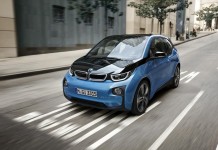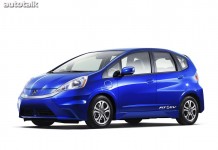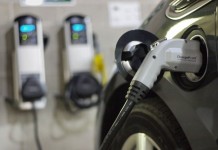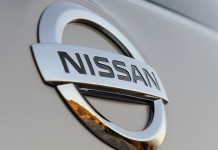Dozens of carmakers are showing off “green” vehicles at the Beijing Auto Show as they position themselves for a hoped-for alternative-energy boom in the world’s biggest auto market.
SAIC Motor Corporation, China’s biggest car maker in terms of sales, unveiled its E1 electric car at the week-long show, where nearly 1,000 vehicles are on display — mostly gas-guzzlers, but also 95 hybrid and electric models.
US auto giant General Motors and China’s BYD were also wooing customers with their “green” models in a market that raced past the United States last year to take pole position.
GM rolled out its Volt electric car, which is expected to be on the road in 2011, while BYD, part-owned by US billionaire investor Warren Buffett, launched its five-seat, all-electric e6.
Beijing Automotive Industry Holding Co announced at the show it would invest about 3.7 billion yuan (542 million dollars) in developing alternative-energy cars, in a sign of the growing importance of that segment of the market.
“I think there is a tremendous amount of opportunity here,” said Paige Mantel of Better Place, a US maker of electric vehicle systems such as battery chargers.
But analysts warned that the road to a viable green vehicle market in China remains a long one that requires government subsidies to smooth the way.
“The government needs to play a big role to get critical mass,” said Raymond Tsang, a Shanghai-based partner at consulting firm Bain & Company.
“What is lacking is more systematic, consistent subsidies.”
Alarmed by worsening pollution and a soaring reliance on oil, China is pushing green energy technologies, saying it wants sales of such vehicles to account for 10-15 percent of total sales by 2020.
But progress has been slow.
The government had been expected in January to announce subsidies for alternative-energy vehicles that would make them more affordable for price-sensitive Chinese consumers.
However, Beijing reportedly delayed the announcement to seek further input from automakers.
In the meantime, high price tags, limited driving ranges and lack of battery recharging stations were putting the brakes on sales, said Finbarr O’Neill, global president of consulting firm JD Power and Associates.
Less than 4,000 hybrids were sold in China last year while electric car sales were “negligible”, he said.
That compares with total China vehicle sales of 13.64 million in 2009 — vaulting it past the United States — as increasingly well-off consumers snapped up fuel-guzzling models, helped by government sales incentives.
Green-energy vehicles however remained considerably more expensive than standard internal combustion engine versions, with a rechargeable battery adding 10,000-15,000 dollars to the price tag, said O’Neill.
“I don’t see a sizable part of the buying public that will pay a premium just to have an ecologically positive car,” he said.
“Without subsidies, it is going to be very difficult for companies like BYD to reach critical mass.”
BYD reportedly delivered just 48 F3DM plug-in hybrid sedans in 2009 at 149,800 yuan each. It sold 290,000 of the fuel-powered version at 59,800 yuan apiece.
China’s government and automakers have invested less than 10 billion yuan in developing “green” vehicles since 2006, including 1.1 billion yuan from Beijing, the Ministry of Industry and Information Technology said in January.
Despite the sluggish start, there is optimism among industry players such as Better Place.
The company last weekend signed a preliminary agreement with Chinese independent car maker Chery to develop electric vehicle prototypes for government pilot programmes.
“It is the largest car market in the world and it is a country that is looking for alternatives to oil,” Mantel said.
The Beijing Auto Show, which opened to the public on Tuesday, runs through May 2







